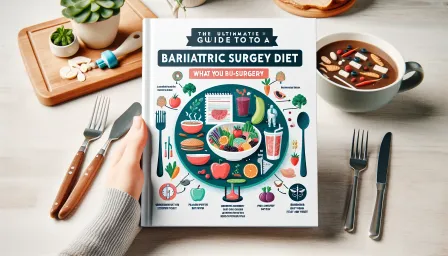Master Food Journaling for Mindful Eating: Transform Your Relationship with Food

Discover how food journaling for mindful eating can transform your relationship with food. Learn techniques, tips, and benefits to improve your overall well-being.
Introduction
In today's fast-paced world, maintaining a healthy relationship with food can be challenging. With numerous distractions and a hectic lifestyle, it is easy to fall into mindless eating habits. However, food journaling for mindful eating offers a powerful solution to transform these habits and foster a healthier relationship with food. In this article, we will explore the concept of food journaling for mindful eating, its benefits, techniques, and tips for effective implementation.
What is Food Journaling for Mindful Eating?
Food journaling is the practice of recording everything you eat and drink throughout the day. Mindful eating, on the other hand, involves paying full attention to the experience of eating and drinking, being aware of the sensations, thoughts, and emotions that arise during meals. Combining these practices, food journaling for mindful eating helps individuals become more conscious of their food choices, behaviors, and the reasons behind them.
Benefits of Food Journaling for Mindful Eating
1. Increased Awareness and Accountability
Writing down what you eat and drink increases your awareness of your eating patterns. This heightened awareness can reveal unhealthy habits and emotional triggers, leading to more accountability in your food choices.
2. Improved Relationship with Food
Mindful eating encourages individuals to focus on the present moment, savoring each bite without judgment. Over time, this practice can foster a healthier, more positive relationship with food, reducing tendencies toward overeating or emotional eating.
3. Enhanced Nutritional Knowledge
Food journaling allows you to track nutrient intake, helping you identify areas where your diet may lack balance. This insight can guide you toward making more informed and healthier dietary choices.
4. Better Weight Management
By becoming more aware of portion sizes and caloric intake, food journaling for mindful eating can support weight management goals. It helps you stay accountable and make necessary adjustments to your eating habits.
How to Start Food Journaling for Mindful Eating
1. Choose Your Method
Decide whether you prefer a traditional paper journal, a digital app, or an online platform. Each method has its pros and cons, so select one that best suits your lifestyle and preferences.
2. Track Regularly
Consistency is key. Aim to record your food and drink intake daily. Include details such as portion sizes, meal times, and any emotions or thoughts associated with your eating experiences.
3. Practice Non-Judgment
Approach your food journal with curiosity rather than criticism. The goal is to observe and understand your eating habits without judgment. This mindset fosters self-compassion and encourages positive change.
4. Reflect and Review
Set aside time each week to review your journal entries. Look for patterns, triggers, and areas for improvement. Reflect on what you have learned and how you can apply these insights to your future eating habits.
Tips for Effective Food Journaling
1. Be Honest and Accurate
Honesty is vital for obtaining accurate insights. Include all foods and drinks consumed, even the small snacks or indulgences. Over time, these details will provide a clear picture of your eating patterns.
2. Include Context
Note any relevant context, such as where you were eating, who you were with, and what you were feeling before and after eating. This information can help identify emotional and environmental triggers.
3. Set Goals
Use your food journal to set specific, achievable goals. Whether it's increasing your intake of vegetables, reducing sugary snacks, or practicing mindful eating during meals, setting goals provides direction and motivation.
4. Celebrate Progress
Recognize and celebrate your progress, no matter how small. Acknowledging victories, such as making a healthier food choice or successfully tuning into your hunger cues, reinforces positive behavior.
Overcoming Common Challenges
Lack of Time
Time constraints can be a significant barrier. To overcome this, try simplification techniques, such as using shorthand or symbols for common foods and emotions. Utilize pocket-sized journals or mobile apps that can be updated on the go.
Inconsistent Tracking
Consistency issues are common. Set reminders or schedule specific times for updating your journal. Start with small, manageable goals, such as tracking one meal per day, and gradually increase as it becomes a habit.
Emotional Discomfort
Addressing emotional eating can be uncomfortable. Approach your journal with compassion and an open mind. Consider seeking support from a therapist or counselor if you find it challenging to deal with deep-seated emotions alone.
Integrating Technology: Apps for Food Journaling
Technology can streamline the food journaling process. Numerous apps are designed to assist with food tracking and mindful eating. Some popular options include MyFitnessPal, Yazio, and FoodPrint. These apps often feature database searches, barcode scanning, and nutrient tracking, making it simpler to maintain an accurate journal.
Conclusion
Food journaling for mindful eating is a valuable tool for anyone looking to improve their relationship with food. By increasing awareness, fostering accountability, and promoting intentional eating, this practice can lead to lasting positive changes in your dietary habits and overall well-being. Start your food journaling journey today and discover the transformative power of mindful eating.






















